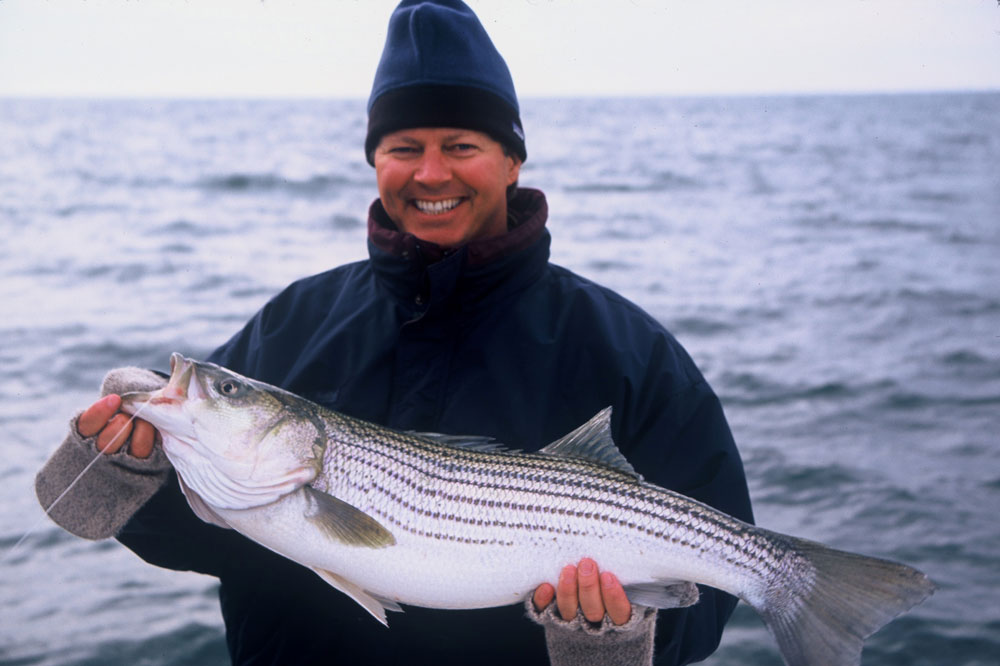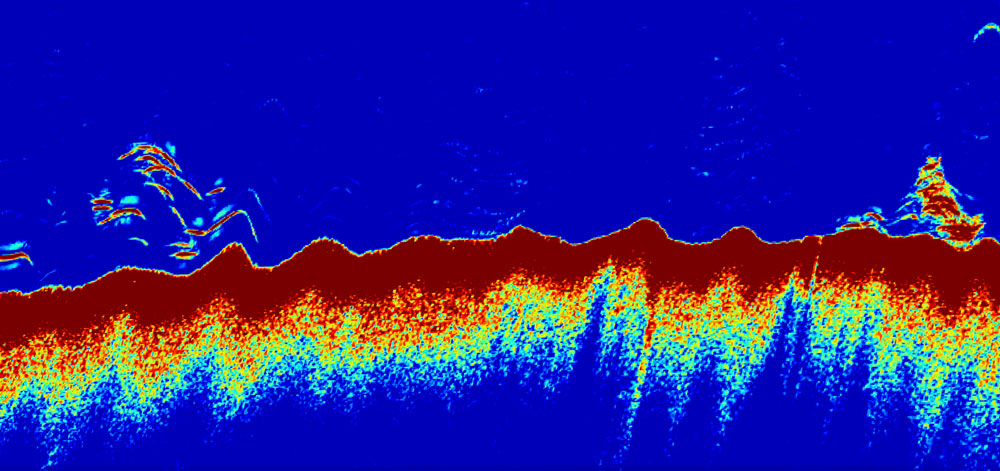In certain parts of the Mid-Atlantic and particularly when it comes to Chesapeake Bay fishing, November can be the hottest striper month of the year. On occasion it can even out-rank the spring season for monster stripers, if the big fish hang a right turn when they hit the mouth of the Bay on their migration southward. In fact, considering how slow much of Maryland’s spring trophy season was this year, there’s a fair chance you’ll have a better shot at a trophy-sized fish in the next month or so than you did back in May. And even if the big fish don’t decide to celebrate Thanksgiving in the Chesapeake, the schoolies are sure to be thick—in both numbers and girth.

The cooling waters do, however, require a few changes in tactics. Before we get too deep into talking about how to target these late season fish, however, there’s a caveat: the weather will dictate when and how much the striped bass swimming in our waters change their ways. We can’t predict what water temperatures will be in the future, so we do want to point out that exactly when you’ll want to start shifting your tactics can’t be preordained. This is a time of significant transition, and that’s why we’re serving up this info at the same time we recommend checking out Pea-Nutty: Live-lining Peanut Bunker for Stripers, which will clue you in on another effective fall technique.
A Chill Increases Rockfish Feeding
As water temps fall down through the 60’s we’re likely to see an explosion of action, with breaking fish trying to fatten up for winter. Fishing during this stage is often about as easy as it gets; the rockfish will hit nearly anything you put in front of them, there are still plenty of peanut bunker around for live-lining, and birds commonly give away the fish’s location. By the time this edition goes to print this stage is likely to be in full swing.
What will come next is a different story. And if the cool-down starts early, the fish may have already begun to enter a cool-down phase of their own. Regardless of what the temperature may be today, sooner or later it’ll start plummeting.
After the big fall push when water temps drop into the 50’s, while you’ll still encounter working birds the fish may become a bit more reluctant to engage in such behavior. This is often the time-frame when those massive schools of fish break up a bit. Jiggers and chummers will need to use their fishfinders more than their eyes to locate the fish, which will often be located along drop-offs and channel edges. At some point, finding structure will become more important that finding birds, especially if you want to locate school-sized fish.
This is a time when the effectiveness of fall trolling grows substantially, particularly when it comes to 40-inch-plus fish. Many of the largest stripers—if they come up the Bay—will be scattered as opposed to schooled. Anglers looking to encounter these bruisers should up-size their offerings substantially as opposed to summer trolling. Put away the five-inch shad and Tsunamis that were so effective on schoolies earlier in the fall, and instead opt for traditional spring-sized parachutes and shad tail tandem rigs, umbrellas, and spoons. One exception: some fall seasons, hoses become a great addition to the spread.
Anglers focusing on these large fish will usually have the most success if they also treat their search patterns more or less as they did in the spring. Troll open waters at slow speeds, and focus on areas where you see bait-balls. If catching schoolies is in the plan, stick closer to structure where you spot stacks of fish, and put out baits that are sized appropriately.
Winter Rockfish Tactics
When water temps sink below the 50’s, catching stripers can grow a lot tougher. Finding them churning the surface is a memory, and whatever style of fishing you enjoy, you’ll have to locate fish with the meter. They’ll usually be deep, often sitting at or just over bottom, and need to be tempted into striking.

Jiggers will have to tone down their presentation. This is a good time to trade in your straight-tail plastics, which require a lot of motion to “swim” enticingly, for screw-tail jigs which can be bounced slowly along the bottom. A vertical jigging presentation will sometimes prove more effective than any other at this time of year, too. Heavy metal may also be a good bet, if you can park your boat right on top of the fish and swing those spoons up and down right in front of the fish’s noses.
When open-water fish seem to have shut down, visiting a warm-water discharge may be the best move. Most of the discharges in our region won’t really come on strong until it’s been quite cold for an extended period of time, but that doesn’t mean you can’t find a few fish willing to bite at them late in the fall.
Trolling will still prove effective in the chilly water, but again, things need to be toned down a bit. A trolling speed of 2.5 knots is not too slow. But make sure you keep a close eye on your lures, and if they aren’t swimming properly at that pace, swap them out for lures that look better while crawling along. A big wobbling spoon, like a #21 Tony, can be a killer at this time of year.
Bundle up, people—no matter how cold it gets between now and the end of the striped bass season, you can still get those fish to bite. The only way to ensure they have lock-jaw is to remain inside, sitting on the couch.